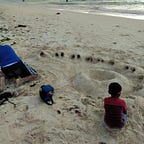Reading At 1 Year Old
Reading At 1 Year Old
I have a 4 year old who is a reading at a grade 3 level. To be honest, I do not believe that he is exceptional. I believe that if children are taught to read from a tender age; by the age of 3 or 2 they will be able to pick up a grade 1 story book and read it with ease. I am going to share with you how exactly how I did it.
1. Time and patience: at this age children have a short attention span, which means lessons should last a minute or less. I used to give about 2–3 lessons throughout the day. It’s going to be a long ride, but a fruitful one that should put your child ahead.
2. Start simple and do not expect much: at 1 year old my son was barely talking but he was mostly mumbling. So I started with the obvious. I taught him the alphabet; some letters he could say properly , but he did mumble sounds that sounded similar to the letters that he couldn’t say properly.
3. Take baby steps and move along with how they grasp: I taught my son 4 letters at a go. I would show him the letter say it out and prompt him to repeat it. Each letter would be repeated 3–4 times. And whenever we came across a letter that gave him difficulty, we would repeat it more often. Sometime have a 10 second session at a different time just for that particular letter. I would move on to the following four letters after he was able to easily recognize the set letters we had been working on.
4. Materials: I used flash cards and foam letters. I could see that he related more to the foam letters; because he would touch them and feel the shape of the letters.
5. Transitioning from letters to the sounds they make: My lessons started off with lower case letters. After being satisfied that he knows the alphabet, I introduced upper case letters along side lower case letters. I did it again with four letters at a time but it went faster. The next step was to teach him the sounds that each letter make. Then I taught him the sounds that two letters make, first a consonant and a vowel (e.g ba,be, bi, bo, bu),then two consonants (e.g ch, fl, st,sm).
6. Sight words: I used flash cards, of which I grouped the one letter words, two letters words and so on. And just as before I taught 4 words at a go. Am sure by now you can see why patience is needed. To test him; I would place the cards on the table and ask him to pick out the word I read out. Then obviously move on to the next words after he identifies words we worked on with ease.
Note: keep in mind that as time goes by, you can increase sessions by 30 seconds or a minute depending on how your child is coping.
7. Introducing story books: I introduced books by levels. He would start of reading one book a day, then two books. One in the morning and one in the late afternoon. I later realize that he wasn’t actually reading. He was remembering the sight words. Every new word was a challenge for him. So every time he came across a new word; I would encourage him to sound it out and help him when it was necessary.
Being patient and not expecting too much has really been a beneficial asset. It has kept me from getting frustrated; which could have passed to my son and caused a lack of interest in both parties. It has also helped in times when we had to go back and learn again. So be prepared; you might have to go back to repeat some lessons in order for them to resonate in your child. And remember that your child doesn’t have to be a year old, he can be 2 or older.
I’m very a busy mom and my plate is always full during the day. So I had these lessons with my boy early in the morning and in the late afternoon. I realized that 5–10 minutes (or less) a day, spent teaching my boy can put him ahead of the “expected level” he is supposed to be in. I hope this helps you and your children.
Originally published at https://businessinchildinvestment.com
